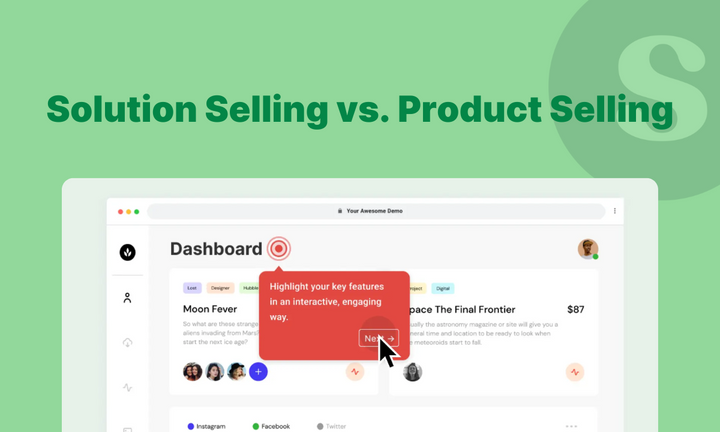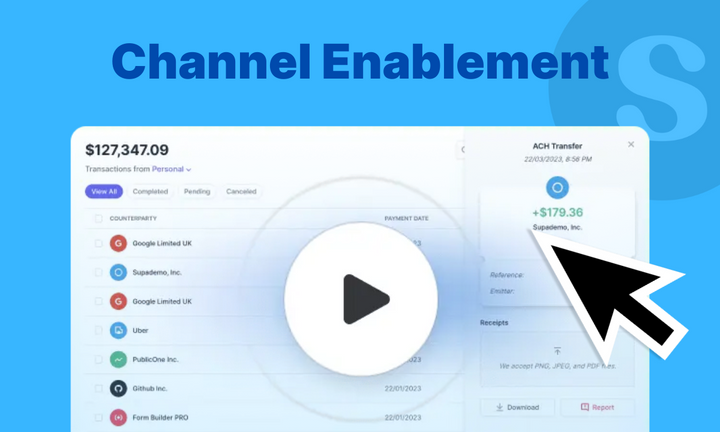In today's highly competitive business landscape, sales enablement has emerged as a critical strategy for organizations aiming to drive revenue growth and empower their sales teams. Sales enablement involves providing sales professionals with the right tools, resources, and training to effectively engage customers, overcome challenges, and close deals.
In this comprehensive article, we explore the concept of sales enablement, its key components, and the tangible benefits it brings to businesses, ultimately highlighting why it matters in achieving sales success.
What is Sales Enablement?
Forrester Research, a well-known market research and advisory firm, also emphasizes the importance of sales enablement. They define sales enablement as a strategic approach that provides sales teams with the necessary resources, tools, and information to effectively engage with customers throughout the buyer's journey.
By aligning marketing and sales efforts, leveraging data and analytics, and implementing training programs, sales enablement enables organizations to drive revenue growth and enhance customer experiences.
The benefits of sales enablement include:
1) Connecting sellers with promotional content.
2) Providing multiple methods for delivering content.
3) Offering real-time visibility into customer interactions.
4) Optimizing pitches through sophisticated analytics.
5) Delivering training and guidance to sellers.
6) Measuring the impact of these activities on the bottom line.
Importance of Sales Enablement
Sales enablement plays a crucial role in saving time for sales and marketing teams while empowering them to compete effectively in a crowded marketplace. Traditional sales and marketing approaches must adapt to the demands of modern customers who seek value and support from products or services.
With limited interaction time between sales representatives and B2B buyers, it is vital to equip sales teams with the right information and materials at the appropriate moments. Effective sales enablement begins with organizing digital content to align with different phases of the sales cycle, making it easily accessible and shareable. This allows the sales team to focus on closing deals efficiently.
Ownership of Sales Enablement
Given that sales enablement involves both marketing and sales, the responsibility is often shared between these two departments.
Marketing typically controls the dissemination of information and content generation, while sales puts these tactics and materials into practice. Collaboration between the two teams is essential for evaluating what works, what doesn't, and how each step of the buyer's journey aligns with sales enablement efforts.
Roles and Responsibilities of Sales Enablement Teams
Sales enablement teams undertake various responsibilities, including:
1) Developing onboarding and coaching programs.
2) Creating assets and content tailored to the sales team's needs.
3) Implementing a coaching strategy.
4) Managing techniques for customer communications.
5) Administering sales enablement technologies and processes.
6) Reporting on the effectiveness and performance of services.
The Five-Step Sales Enablement Process
Sales enablement primarily focuses on the early to middle stages of the sales cycle, such as discovery, solution mapping, and presentation. To ensure a lead converts into a sale, collaboration between sales enablement and marketing is crucial. Here are some ways your marketing team can support sales efforts:
1) Develop buyer personas for sales representatives.
- Identify target buyers.
- Create targeted campaigns and collateral.
- Monitor conversations to enhance the sales cycle.
2) Create targeted campaigns and collateral.
- Understand and meet the needs of prospects.
- Gather feedback directly from sales representatives and prospects.
3) Monitor conversations to enhance the sales cycle.
- Anticipate and fulfill customer needs.
- Tailor sales pitches to each customer.
4) Ensure consistency between the sales process and the buyer's journey.
- Utilize a modern and user-friendly CRM system.
- Track relevant data and key performance indicators (KPIs).
5) Gather feedback directly from sales representatives and prospects.
- Leverage the expertise of sales reps and customer success teams.
- Use insights to produce or refine sales enablement content.
Sales Enablement Best Practices
To enhance your sales enablement program, consider the following best practices:
1) Secure senior-level support and prioritize specific business outcomes.
- Set KPIs related to increased commission, average contract value, speed of closing deals, decreased customer attrition, and time and cost savings.
2) Focus on delivering an exceptional buyer experience.
- Provide relevant content throughout the sales phases.
- Align sales processes and content with the buyer's path to purchase.
3) Create high-quality content that resonates with prospects.
- Offer a range of content types for sales conversations.
- Utilize content marketing strategies to support lead development.
4) Invest consistently in sales training.
- Provide ongoing coaching and training sessions.
- Implement just-in-time skill development for active deals.
5) Foster engagement among sales representatives.
- Educate sales reps on how their efforts impact the company's bottom line.
- Enforce best practices and standardized sales decks.
Sales Enablement: The Ultimate Partnership
Effective sales enablement requires a strong partnership between marketing and the sales team. When data, content, and processes align towards a common goal, remarkable outcomes can be achieved. Regardless of the business size, focusing on company-wide objectives, establishing open communication channels, and providing easy access to relevant tools, resources, and materials are key to successful sales enablement.
By working together, you can foster effective sales and drive your brand forward.








